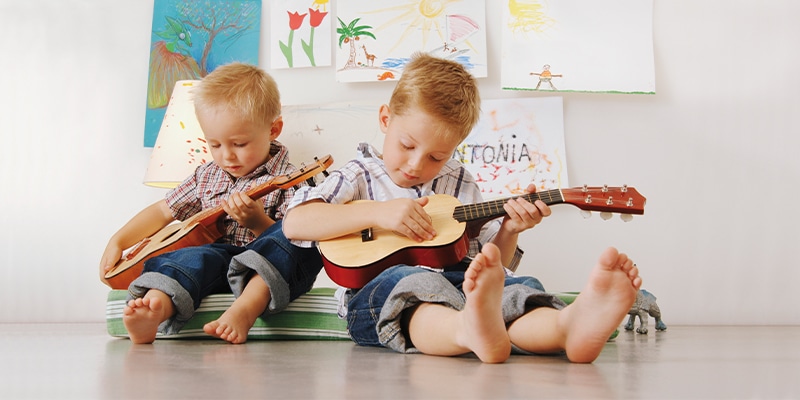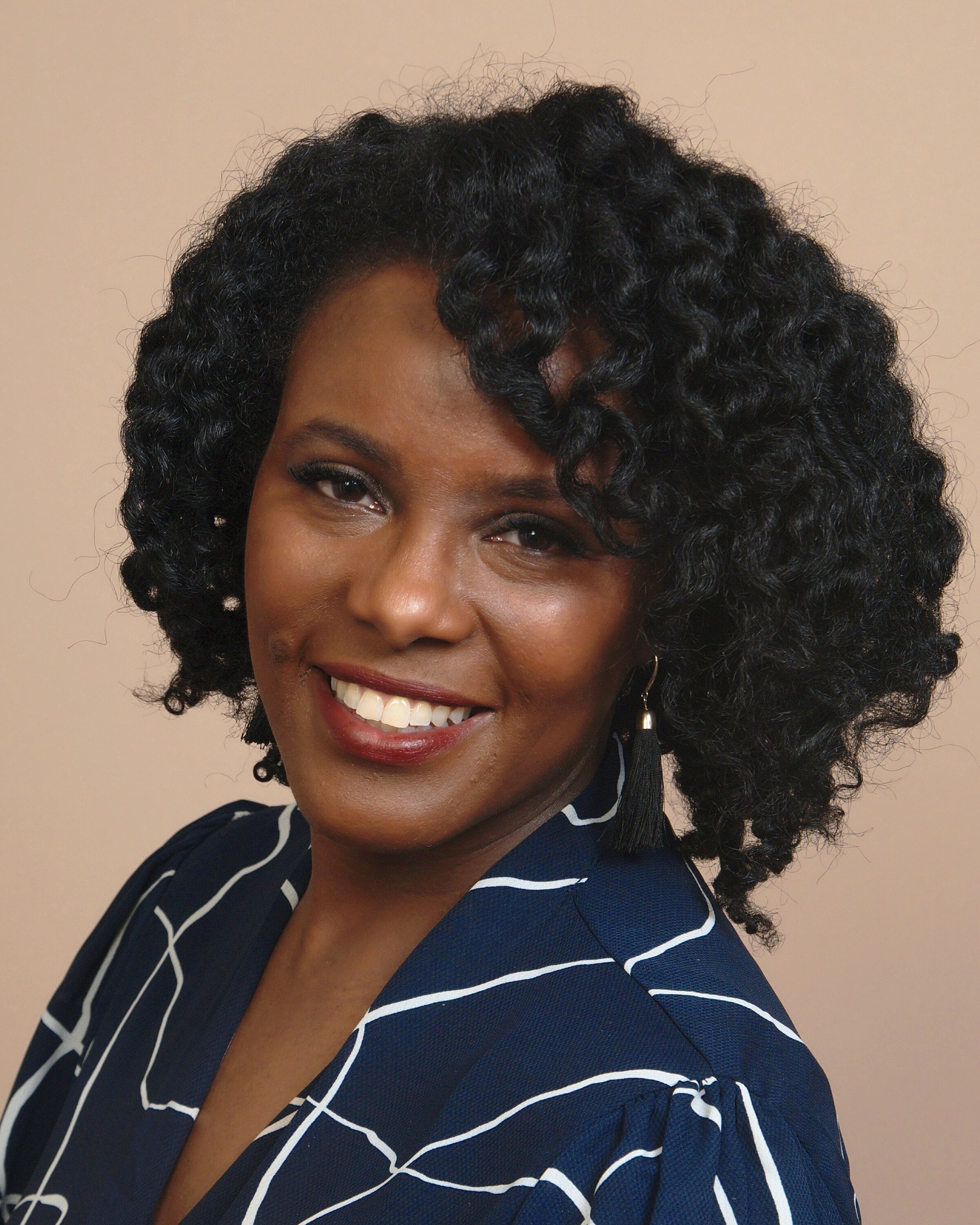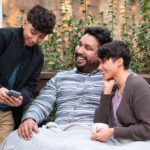Aneesha Pretto, Natalie Teakle
Published Jul 08, 2021 | Feb 13, 2024
Auditory Neuropathy Spectrum Disorder (ANSD) & Cochlear Implantation in Children
Auditory neuropathy spectrum disorder (ANSD) affects how sound is sent from the ear's inner hair cells to the brain. Here's the latest research on ANSD, cochlear implant candidacy, and tips for (re)habilitation unique to this patient population.

What Is Auditory Neuropathy Spectrum Disorder?
Auditory neuropathy spectrum disorder (ANSD) is a group—or spectrum—of hearing disorders that affects how sound is sent from the inner hair cells of the ear to the brain. Some children with ANSD may have a normal or near-normal ability to detect sound, while others can experience a loss of hearing sensitivity ranging from mild to severe or even profound hearing loss.
Even when individuals with ANSD do detect sound, they can often have difficulty understanding speech clearly, especially when noise is present, which is typically out of proportion to their tonal thresholds De Siati, R. D., Rosenzweig, F., Gersdorff, G., Gregoire, A., Rombaux, P., & Deggouj, N. (2020). Auditory neuropathy spectrum disorders: from diagnosis to treatment: literature review and case reports. Journal of clinical medicine, 9(4), 1074. https://doi.org/10.3390/jcm9041074[1]. ANSD can sometimes affect the processing of timing cues required to understand a rapidly changing acoustic signal such as speech; as a result, speech can seem distorted and difficult to understand even though the child is able to hear it. This condition has been described as dys-synchrony and is a common subtype of the auditory neuropathy spectrum. Individuals with ANSD may also display unexpectedly poorer performance with understanding speech-in-noise relative to their peers with congenital sensorineural hearing loss. Clinical presentation of ANSD varies widely, due to the range of possible etiologies De Siati, R. D., Rosenzweig, F., Gersdorff, G., Gregoire, A., Rombaux, P., & Deggouj, N. (2020). Auditory neuropathy spectrum disorders: from diagnosis to treatment: literature review and case reports. Journal of clinical medicine, 9(4), 1074. https://doi.org/10.3390/jcm9041074[1].
What Does Research Tell Us about Best Practice?
Traditional audiological tools to assess the severity of ANSD, while useful for diagnosis, are not reliable indicators of auditory potential in children affected with this disorder. Specifically, do not dependably predict the auditory thresholds in children with ANSD.Hayes, D., Sininger, Y. S., & Northern, J. (2008, June). Guidelines for identification and management of infants and young children with auditory neuropathy spectrum disorder. In Proceedings of the Guidelines Development Conference at NHS.[2] Instead, current international guidelines suggest that inadequate progress in spoken language development and speech recognition ability should weigh heavily upon decisions about audiological management, particularly cochlear implantation, regardless of the individual’s hearing thresholds.Hayes, D., Sininger, Y. S., & Northern, J. (2008, June). Guidelines for identification and management of infants and young children with auditory neuropathy spectrum disorder. In Proceedings of the Guidelines Development Conference at NHS.[2]
ANSD outcomes for individuals following cochlear implantation have demonstrated an overall improvement in pure-tone thresholds following a failed trial with amplification.Roush, P., Frymark, T., Venediktov, R., & Wang, B. (2011). Audiologic Management of Auditory Neuropathy Spectrum Disorder in Children: A Systematic Review of the Literature. American Journal Of Audiology, 20(2), 159-170. https://doi.org/10.1044/1059-0889(2011/10-0032)[3] Improvements in speech recognition performance have been generally favorable but more variable. Typically, poorer outcomes have been observed in individuals who have a compromised auditory nerve (e.g., cochlear nerve deficiency) or in cases where the neural integrity is in question.Buchman, C., Roush, P., Teagle, H., Brown, C., Zdanski, C., & Grose, J. (2006). Auditory Neuropathy Characteristics in Children with Cochlear Nerve Deficiency. Ear & Hearing, 27(4), 399-408. https://doi.org/10.1097/01.aud.0000224100.30525.ab[4]Teagle, H., Roush, P., Woodard, J., Hatch, D., Zdanski, C., Buss, E., & Buchman, C. (2010). Cochlear Implantation in Children with Auditory Neuropathy Spectrum Disorder. Ear & Hearing, 31(3), 325-335. https://doi.org/10.1097/aud.0b013e3181ce693b [5]Walton, J., Gibson, W., Sanli, H., & Prelog, K. (2008). Predicting Cochlear Implant Outcomes in Children With Auditory Neuropathy. Otology & Neurotology, 29(3), 302-309. https://doi.org/10.1097/mao.0b013e318164d0f6[6] Recent systematic reviewsRaza, A. F., Aryal, S., & Prabhu, P. (2023). Indicators for cochlear implantation in children with auditory neuropathy spectrum disorder: A systematic review. International Journal of Pediatric Otorhinolaryngology, 111737. https://doi.org/10.1016/j.ijporl.2023.111737[7]Morlet, T., O’Reilly, R., Pritchett, C., Venskytis, E., & Parkes, W. (2023). A 15-year review of 260 children with auditory neuropathy spectrum disorder: II. Management and outcomes. Ear and Hearing, 44(5), 979-989. https://doi.org/10.1097/AUD.0000000000001366[8] have shown the overall benefits of cochlear implantation for children with ANSD, however prognostic factors including the site of lesion, hearing aid experience, genetic testing, genetic and developmental comorbidities and age of implantation need to be considered prior to recommending a cochlear implant for children with ANSDRaza, A. F., Aryal, S., & Prabhu, P. (2023). Indicators for cochlear implantation in children with auditory neuropathy spectrum disorder: A systematic review. International Journal of Pediatric Otorhinolaryngology, 111737. https://doi.org/10.1016/j.ijporl.2023.111737[7]. Age at implantation was suggested as a predictor of speech perception and speech intelligibility following cochlear implantation in this populationRaza, A. F., Aryal, S., & Prabhu, P. (2023). Indicators for cochlear implantation in children with auditory neuropathy spectrum disorder: A systematic review. International Journal of Pediatric Otorhinolaryngology, 111737. https://doi.org/10.1016/j.ijporl.2023.111737[7]. For this reason, detailed multidisciplinary assessment, and careful and deliberate counselling of expectations regarding cochlear implant outcomes is recommended for all candidates.Hayes, D., Sininger, Y. S., & Northern, J. (2008, June). Guidelines for identification and management of infants and young children with auditory neuropathy spectrum disorder. In Proceedings of the Guidelines Development Conference at NHS.[2]
Special Considerations
Cochlear implant candidacy for individuals with ANSD is determined by the individual’s cochlear implantation team.
ANSD and Cochlear Implant (Re)Habilitation
(Re)habilitation following diagnosis, pre-implant counselling, and a collaborative team effort is essential for success in cochlear implant recipients with ANSD. A well-rounded (re)habilitation program should address:
- Pre-Implant Counseling: If a hearing aid amplification trial is recommended, clear habilitation goals that define expected progress during the trial period are required in order to determine the need for further intervention in a timely manner;
- Collaborative Assessment: For children who are too young for speech recognition testing, the rehabilitation and hearing professionals may work collaboratively to assess the child’s speech understanding in a reliable manner. Keeping a log to document the sounds and/or words the child recognizes can be a helpful tool to determine the child’s speech recognition threshold (SRT). In addition, an informal assessment of their speech recognition can be gathered using vocabulary that the parent or therapist has observed the child knows;
- For all children, especially those who experience fluctuations in hearing sensitivity, routine assessment and monitoring of their functional listening and spoken language skills is recommended. Auditory skills assessments, such as the LittlEARS Auditory Questionnaire, and developmental checklists like A Child’s Journey are useful tools to monitor progress.Therres, M., & Steyns, I. (2017). A Child’s Journey Developmental Milestones (Birth – 6 Years). Innsbruck, Austria: MED-EL Medical Electronics. Contact your local MED-EL representative to obtain a copy or download the A Child’s Journey app (available on tablets only).[9]
- Noise tends to adversely impact speech understanding in individuals with ANSD more so than their counterparts with sensorineural hearing loss. Hearing and (re)habilitation professionals may offer recommendations to help manage noise in daily routines through use of assistive listening devices (e.g., Infrared or FM device, neckloops, etc.,) and environmental modifications (e.g., closing windows or doors, turning off music or a television). They can also share self-advocacy and communication strategies to help minimize the impact of noise when outside of the home.
Activities for Young Children
In order to determine whether the ANSD has an adverse impact on a child’s listening development, rehabilitation professionals must ascertain how well the child understands natural spoken language. Here are some suggested activities to aid in the process:
- Conduct a Daily Listening Check
Functional listening skills can provide useful information to professionals and caregivers about the individual’s auditory response to the sounds of speech. It is recommended for children who rely on a hearing device as well as those who listen without assistance. Daily use of the test can also reveal fluctuations in hearing responses, which is sometimes a feature of ANSD. The Ling 6 Sound Test is a quick and effective check of functional listening. Please visit the MED-EL Blog for more information about the Ling 6 Sound Test and a short video on how it is used.
- Build Auditory Memory
If new vocabulary cannot be retained, then sophisticated spoken language will not emerge. Auditory memory skills challenge the auditory brain to listen and recall critical information in a sentence (i.e., connected speech). Auditory memory activities can include a varying number of key items (e.g., Get your jacket and ball.) or critical elements (e.g., Put your shoes under the table.) that the child must understand and remember in order to grasp the message or follow the request.
- Emphasize Natural Connected Speech
A sound aural habilitation program promotes spoken language development by building from simple, acoustically highlighted speech (e.g. Uh-oh! It fell downnnn!) towards more complex spoken messages (e.g. Your juice cup fell under the table). For children with ANSD, a prolonged emphasis on exaggerated, simplistic language can disguise persistent difficulty with natural conversation which is more rapid. Rehabilitation professionals can maintain a steady emphasis on speech understanding in connected discourse by also including:
- Rhymes and Poems: Children’s songs promote the development of spoken language and are an essential rehabilitation component for children with ANSD. Because children’s songs often include a melody, slower rate, and exaggerated inflection; they may be less challenging for some children. In addition to songs and music, incorporate nursery rhymes, fingerplays, or poems into listening activities as these forms of language emphasize the rhythmicity of natural conversation (but remove additional suprasegmental cues like melody).
- Move Beyond Play Sounds. For young children, we can ‘grab them by the ear’ with exclamations (e.g., Wow! Uh-oh! Hey, listen to this!) or a (e.g., Wow! Uh-oh! or Choo-choo!) that draw their auditory attention. These are core components of aural habilitation for all young listeners; however, children with ANSD may come to rely on the added emphasis of stress and intonation that usually accompanies this type of language. Moving towards natural discourse that includes common vocabulary should remain the focal point of mastery for this group. Rehabilitation professionals should move directly from identification of play sounds to identification of common words (e.g. I hear something that goes beep beep? to I heard the car?).
References
-
[1]
De Siati, R. D., Rosenzweig, F., Gersdorff, G., Gregoire, A., Rombaux, P., & Deggouj, N. (2020). Auditory neuropathy spectrum disorders: from diagnosis to treatment: literature review and case reports. Journal of clinical medicine, 9(4), 1074. https://doi.org/10.3390/jcm9041074
-
[2]
Hayes, D., Sininger, Y. S., & Northern, J. (2008, June). Guidelines for identification and management of infants and young children with auditory neuropathy spectrum disorder. In Proceedings of the Guidelines Development Conference at NHS.
-
[3]
Roush, P., Frymark, T., Venediktov, R., & Wang, B. (2011). Audiologic Management of Auditory Neuropathy Spectrum Disorder in Children: A Systematic Review of the Literature. American Journal Of Audiology, 20(2), 159-170. https://doi.org/10.1044/1059-0889(2011/10-0032)
-
[4]
Buchman, C., Roush, P., Teagle, H., Brown, C., Zdanski, C., & Grose, J. (2006). Auditory Neuropathy Characteristics in Children with Cochlear Nerve Deficiency. Ear & Hearing, 27(4), 399-408. https://doi.org/10.1097/01.aud.0000224100.30525.ab
-
[5]
Teagle, H., Roush, P., Woodard, J., Hatch, D., Zdanski, C., Buss, E., & Buchman, C. (2010). Cochlear Implantation in Children with Auditory Neuropathy Spectrum Disorder. Ear & Hearing, 31(3), 325-335. https://doi.org/10.1097/aud.0b013e3181ce693b
-
[6]
Walton, J., Gibson, W., Sanli, H., & Prelog, K. (2008). Predicting Cochlear Implant Outcomes in Children With Auditory Neuropathy. Otology & Neurotology, 29(3), 302-309. https://doi.org/10.1097/mao.0b013e318164d0f6
-
[7]
Raza, A. F., Aryal, S., & Prabhu, P. (2023). Indicators for cochlear implantation in children with auditory neuropathy spectrum disorder: A systematic review. International Journal of Pediatric Otorhinolaryngology, 111737. https://doi.org/10.1016/j.ijporl.2023.111737
-
[8]
Morlet, T., O’Reilly, R., Pritchett, C., Venskytis, E., & Parkes, W. (2023). A 15-year review of 260 children with auditory neuropathy spectrum disorder: II. Management and outcomes. Ear and Hearing, 44(5), 979-989. https://doi.org/10.1097/AUD.0000000000001366
-
[9]
Therres, M., & Steyns, I. (2017). A Child’s Journey Developmental Milestones (Birth – 6 Years). Innsbruck, Austria: MED-EL Medical Electronics. Contact your local MED-EL representative to obtain a copy or download the A Child’s Journey app (available on tablets only).
-
[10]
Rance, G. (2014). An update on auditory neuropathy spectrum disorder in children. Proceedings Article: Sound Foundation Through Early Int. San Diego, CA: Plural Publishing, 137-44.
References


Aneesha Pretto
Dr. Aneesha Pretto is a nationally certified speech-language pathologist from the United States. She also holds an international certification from the AG Bell Academy as an auditory-verbal therapist.
Natalie Teakle
Natalie Teakle is a Speech and Language Therapist and a Rehabilitation Manager at MED-EL. She provides training and mentoring support globally for professionals working in the field of hearing loss and hearing implants.
Was this article helpful?
Thanks for your feedback.
Sign up for newsletter below for more.
Thanks for your feedback.
Please leave your message below.
CTA Form Success Message
Send us a message
Field is required
John Doe
Field is required
name@mail.com
Field is required
What do you think?
The content on this website is for general informational purposes only and should not be taken as medical advice. Please contact your doctor or hearing specialist to learn what type of hearing solution is suitable for your specific needs. Not all products, features, or indications shown are approved in all countries.


Aneesha Pretto
Dr. Aneesha Pretto is a nationally certified speech-language pathologist from the United States. She also holds an international certification from the AG Bell Academy as an auditory-verbal therapist.
Natalie Teakle
Natalie Teakle is a Speech and Language Therapist and a Rehabilitation Manager at MED-EL. She provides training and mentoring support globally for professionals working in the field of hearing loss and hearing implants.

Aneesha Pretto
Dr. Aneesha Pretto is a nationally certified speech-language pathologist from the United States. She also holds an international certification from the AG Bell Academy as an auditory-verbal therapist.

Natalie Teakle
Natalie Teakle is a Speech and Language Therapist and a Rehabilitation Manager at MED-EL. She provides training and mentoring support globally for professionals working in the field of hearing loss and hearing implants.



